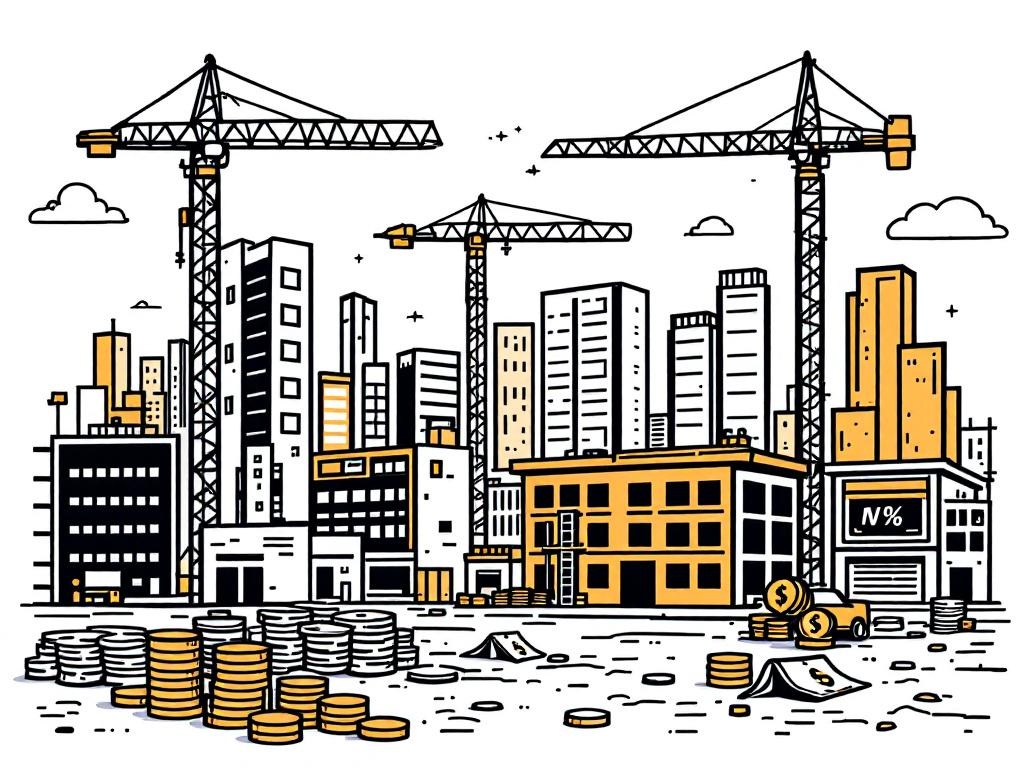US Construction Industry Faces Slowdown Amid Investor Challenges

Washington, D.C., Wednesday, 18 June 2025.
The US construction sector’s growth is set to slow from 6.6% in 2024 to 1.4% in 2025 due to weakening investor confidence and subsidy freezes.
Investor Confidence and Subsidy Changes
The recent slowdown in the U.S. construction industry highlights crucial issues surrounding investor confidence and policy shifts. The industry is projected to experience a significant reduction in growth from 6.6% in 2024 to a mere 1.4% in 2025, largely due to weakened investor sentiment and frequent subsidy freezes. These factors have been attributed to governmental policy changes like President Donald Trump’s ‘Unleashing American Energy’ Executive Order, which paused critical stimulus schemes like the Inflation Reduction Act (IRA) and the Infrastructure Investment and Jobs Act (IIJA) for 90 days starting in January 2025 to curb what was termed excessive government spending [1][2][3].
Economic Impact and Future Projections
The downturn in construction activity is a pressing concern with implications extending across the broader U.S. economy. As projections suggest a modest annual average growth rate (AAGR) of just 2% from 2026 to 2029, sectors such as transport infrastructure and housing—which are integral to economic resilience and recovery—are key focal points for stakeholders wary of legislative and economic stagnation [1]. Economic experts emphasize the interconnectedness of these sectors with financial markets and housing development, warning that sustained underinvestment could hinder long-term economic health and recovery initiatives [4][5].
Geopolitical and Domestic Challenges
Externally, tariffs imposed in April 2025 exacerbate these domestic challenges by increasing material costs and complicating supply chain logistics, particularly affecting the U.S. construction industry’s reliance on imported steel and aluminum. The 25% tariff on these materials inflates costs significantly, placing additional strain on project budgets and timelines. This policy shift predominantly impacts our trade relationships with key partners such as Canada and Mexico, further complicating investor operations and strategic planning in the construction domain [6].
Outlook for Construction and Stakeholder Actions
Looking to the future, the U.S. construction sector’s trajectory depends heavily on legislative clarity and renewed investor optimism. Strategic initiatives by firms, including early engagement in regeneration projects and leveraging domestic manufacturing opportunities, are proposed solutions to mitigate current challenges. Analysts suggest that active, rather than reactive, engagements in these areas will empower companies to better adapt to infrastructure demands and evolving regulatory landscapes [7][8]. While 2025 presents multifaceted challenges, proactive policy response and investment might guide the industry toward recovery post-2025, fostering an environment conducive to sustainable economic growth [9][10].
Sources
- www.globenewswire.com
- www.uschamber.com
- www.worldconstructiontoday.com
- www.pwc.com
- www.bbvaresearch.com
- www.cbre.com
- www.cbre.com
- www.mdm.com